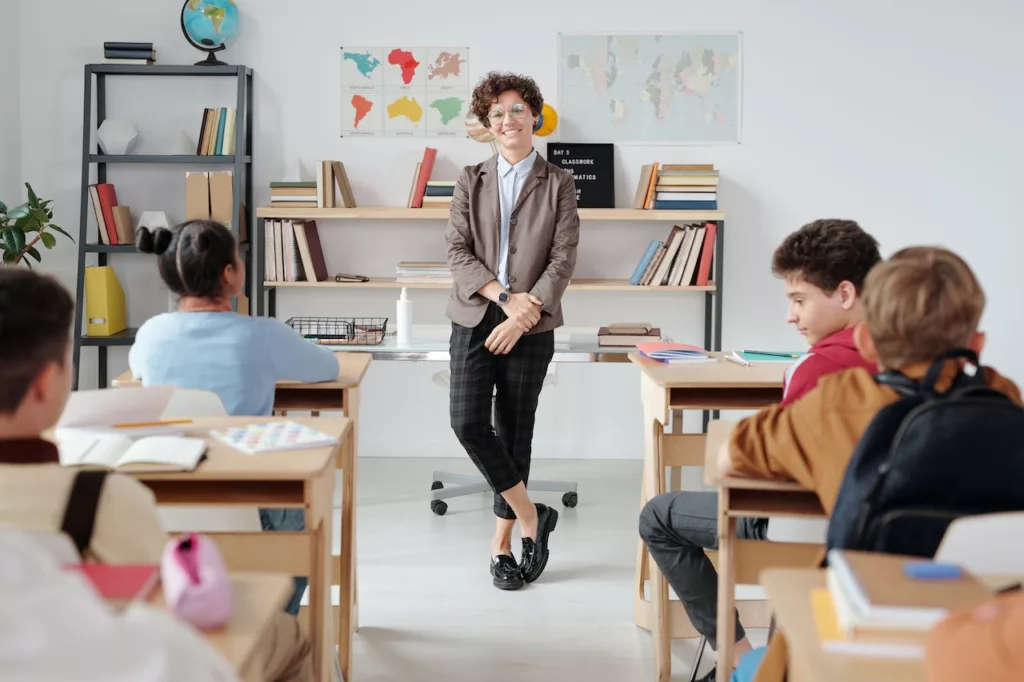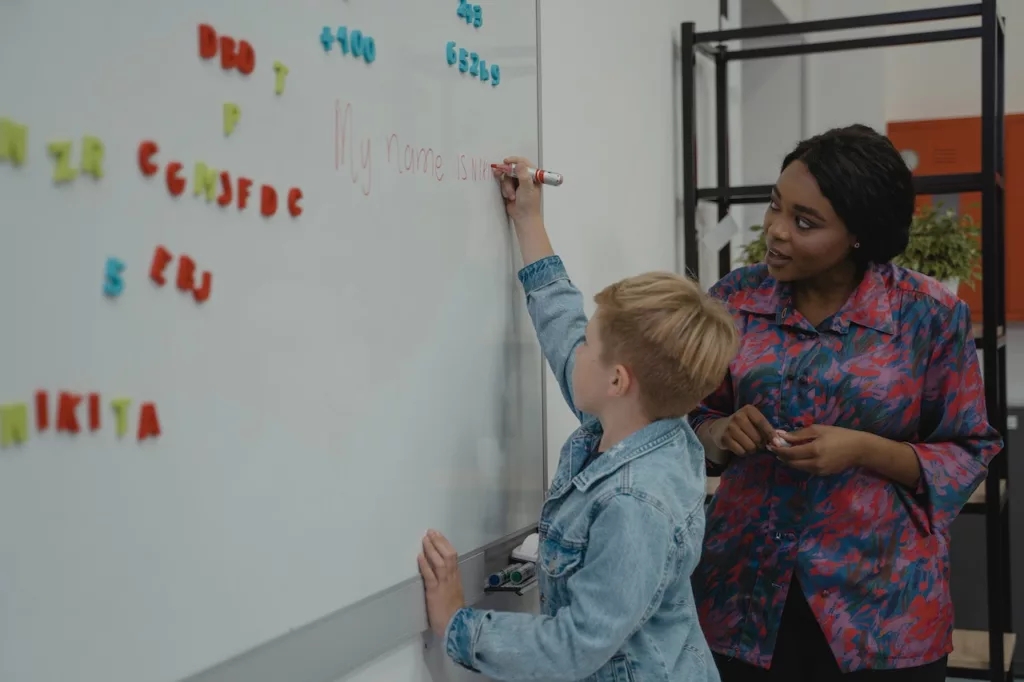
Mindfulness is like a seed; carefully planted and nurtured, it can yield an abundance of fruits. As educators, we have the opportunity to cultivate this skill and teaching students mindfulness, helping them gain understanding and emotional intelligence.
In this article, I’ll provide a guide for teaching students mindfulness – from exploring the benefits to providing practical tips and resources. Let’s start by examining what mindfulness is and why it matters.
Key Takeaways
- Mindfulness is the practice of being aware of thoughts and feelings in the present moment, and it has various benefits for students.
- Practicing mindfulness in the classroom can help students improve their focus, academic performance, self-awareness, and resilience.
- Educators can teach mindfulness by explaining it in simple terms, creating a safe and open atmosphere, encouraging emotional expression, and providing ample practice time.
- Resources for mindfulness education include creative activities, positive attitudes, art projects, and access to a wide variety of materials.
What Is Mindfulness
Mindfulness is simply the practice of being aware of your thoughts and feelings in the present moment. It’s a way to reduce stress and improve emotional regulation, by focusing on each breath or sensation without judgment.
Mindfulness can help you better understand yourself and be more aware of how you’re feeling. It helps to bring greater clarity and confidence when making decisions, as well as improved self-control when it comes to managing emotions.
Practicing mindfulness can also help increase mental resilience, reduce anxiety, and improve concentration levels. With regular practice, this technique can have a profound effect on our lives.
Educators should encourage students to take advantage of mindfulness exercises such as body scanning or mindful breathing in order to experience its potential benefits.
Benefits of Mindfulness for Students

You’ll find that practicing mindfulness can have many benefits for you. It can help with focusing attention, reducing stress, and improving academic performance.
Mindfulness allows students to practice self-awareness and self-regulation skills, which are essential for managing emotions and behavior. In addition, the practice helps to build resilience against adversity by teaching students how to better manage difficult situations and thoughts.
Studies have shown that regular mindfulness training has a positive effect on academic achievement as well as mental health issues such as depression and anxiety.
As an educator, you should consider introducing mindfulness into your classroom to help empower your students with these important life skills.
With this in mind, let’s look at how we can use mindfulness in the classroom next.
Practicing Mindfulness in the Classroom
By engaging in mindfulness activities, you can help your class develop important self-awareness and self-regulation skills. Practicing mindfulness in the classroom helps students connect with peers, maintain emotional regulation, and learn how to manage their thoughts and feelings. Here are a few suggestions for incorporating mindfulness into your classroom:
| Activity | Benefits |
|---|---|
| Mindful Breathing | Reduces stress & anxiety Aids focus & concentration |
| Sensory Exploration | Improves ability to observe Increases awareness of body & environment |
| Guided Imagery | Enhances creativity Develops problem solving skills |
Mindfulness activities are easy to incorporate into daily lessons, helping students become more aware of themselves and others. As an educator, practicing mindfulness with your students will foster healthy relationships while also developing individual growth.
Tips for Educators to Teach Mindfulness
Helping students learn mindfulness can be a challenge, but it doesn’t have to be. For educators, teaching mindfulness is more than just providing calming techniques or encouraging self-reflection. It’s about creating an atmosphere of safety and openness that allows students to explore their thoughts and feelings without judgment.
I use a few key strategies when introducing mindfulness into the classroom. First, I explain the concept in simple terms that are easy for my students to understand. Then, I make sure they know it’s okay for them to express any emotions they may feel while practicing mindfulness exercises. Finally, I provide plenty of time for students to practice their newfound skills before continuing with our lesson plan.
These tips have proved successful in helping my students become more mindful and better equipped to manage their stress levels in a healthy way.
Resources for Mindfulness Education
Gaining access to helpful resources for mindfulness education can be a great way to further your understanding and practice of the concept. A wide variety of activities, books, videos, and other materials can be beneficial in providing an effective educational experience.
| Creative Activities | Positive Attitudes |
|---|---|
| Guided meditations | Affirmations |
| Visualization exercises | Gratitude practices |
| Art projects | Relaxation techniques |
These resources can help educators create lessons that engage students in creative activities while promoting positive attitudes. Mindfulness education is a powerful tool for cultivating awareness and self-regulation skills. With the right resources, educators can provide their students with the knowledge they need to develop these important life skills.
Frequently Asked Questions on Teaching Students Mindfulness
What Are the Key Principles of Mindfulness?
I foster resilience and adopt habits to practice mindfulness. It involves staying present, being aware of emotions without judgement, and regulating reactions to stress. Mindfulness allows us to live with intention and clarity.
How Can I Ensure That My Students Are Practicing Mindfulness Effectively?
Imagining the benefits of mindfulness practice for my students, I guide them through challenging any misconceptions they may have. With a clear and engaging approach, I ensure their practice is effective so they can truly reap its rewards.
How Does Mindfulness Help Students to Cope With Stress and Anxiety?
Mindfulness helps students reduce distractions, regulate emotions, and cope with stress and anxiety. It encourages awareness of thoughts, feelings, and body sensations to better manage difficult experiences. Through practice, students gain the skills to respond calmly in challenging situations.
What Age Group Is Most Suitable for Mindfulness Education?
Surprising as it may seem, mindfulness education is suitable for people of all ages. However, age appropriateness and teacher preparation must be taken into consideration when determining the best age group to teach mindfulness. With this in mind, educators can successfully introduce students to mindful strategies that are suitable for their age level.
How Can I Assess My Students’ Progress With Mindfulness?
I assess my students’ progress with mindfulness by modeling it myself and cultivating their focus. Then I observe changes in behavior to gauge improvement. I also ask them how mindfulness has impacted their day-to-day lives.
Conclusion : Teaching Students Mindfulness
Mindfulness is an invaluable skill that can help students manage stress, stay focused, and cultivate empathy.
By introducing practices such as meditation, breathing exercises, and mindful activities into the classroom environment, educators can empower their students to live with intention and find peace in the present moment.
As the old adage goes – ‘A journey of a thousand miles begins with a single step’ – it’s never too late to start teaching mindfulness!
